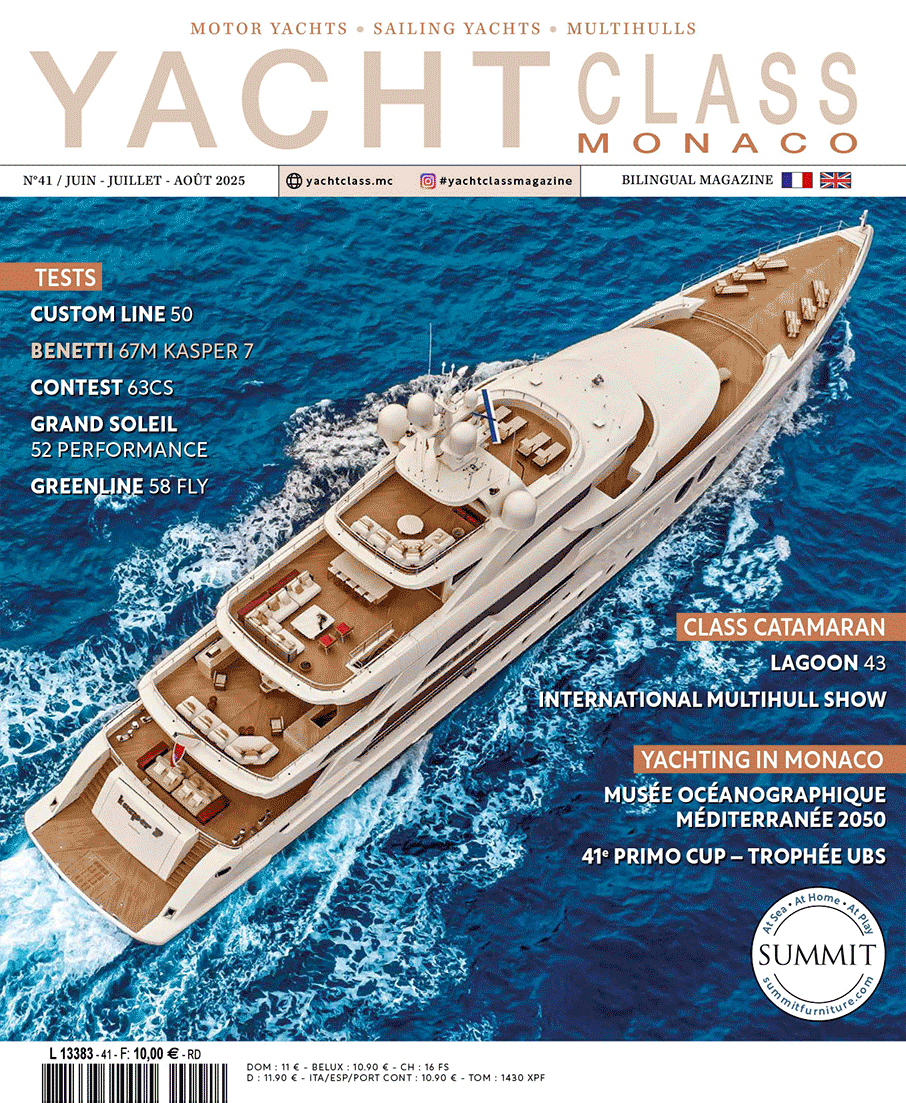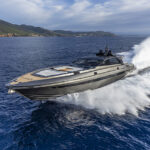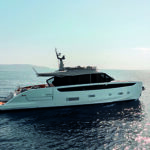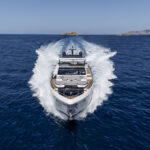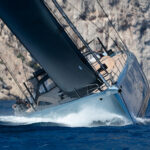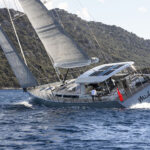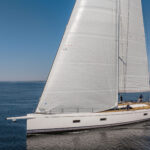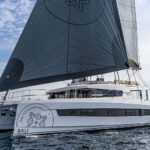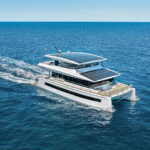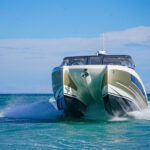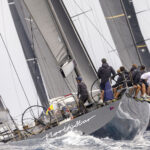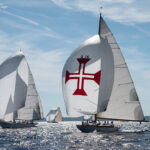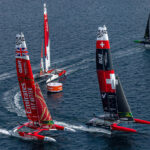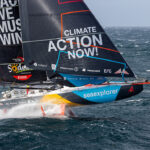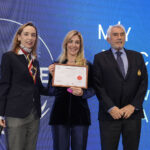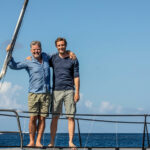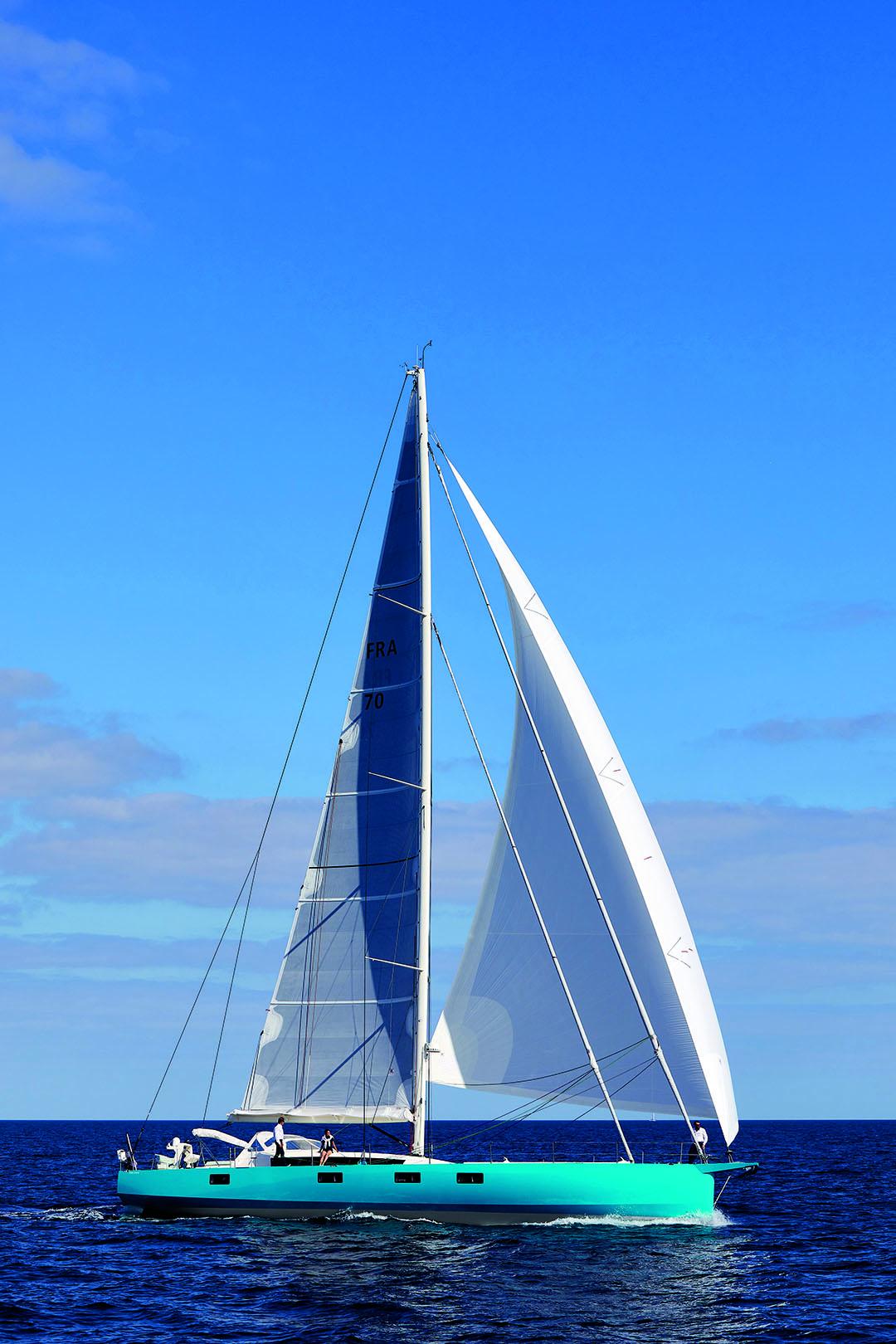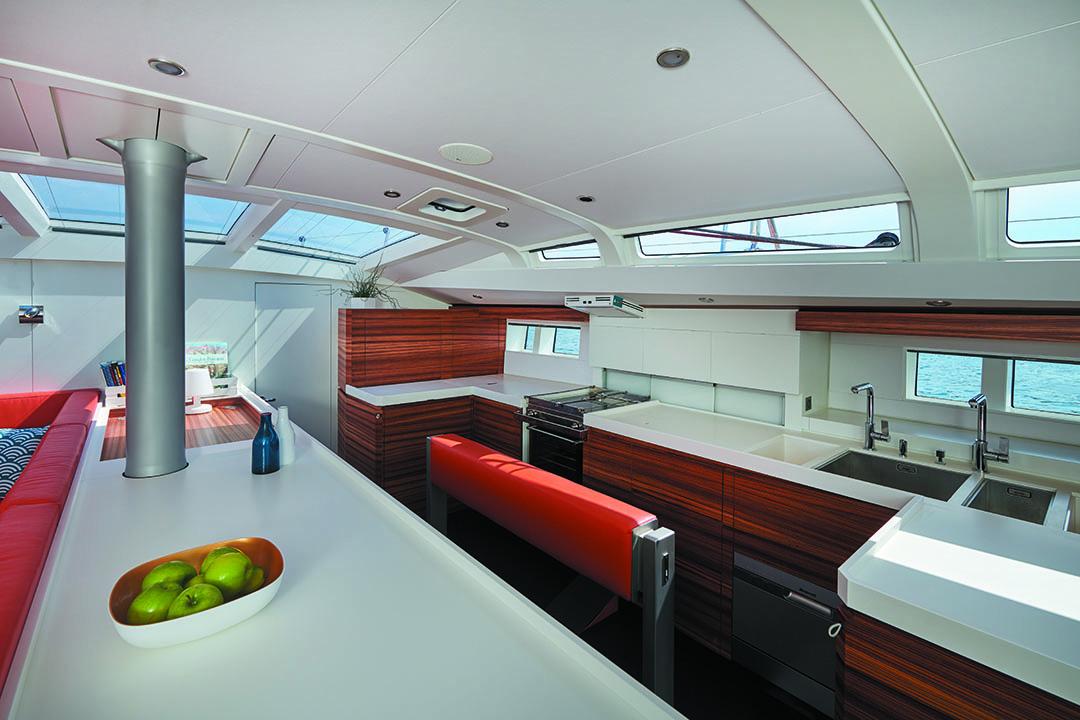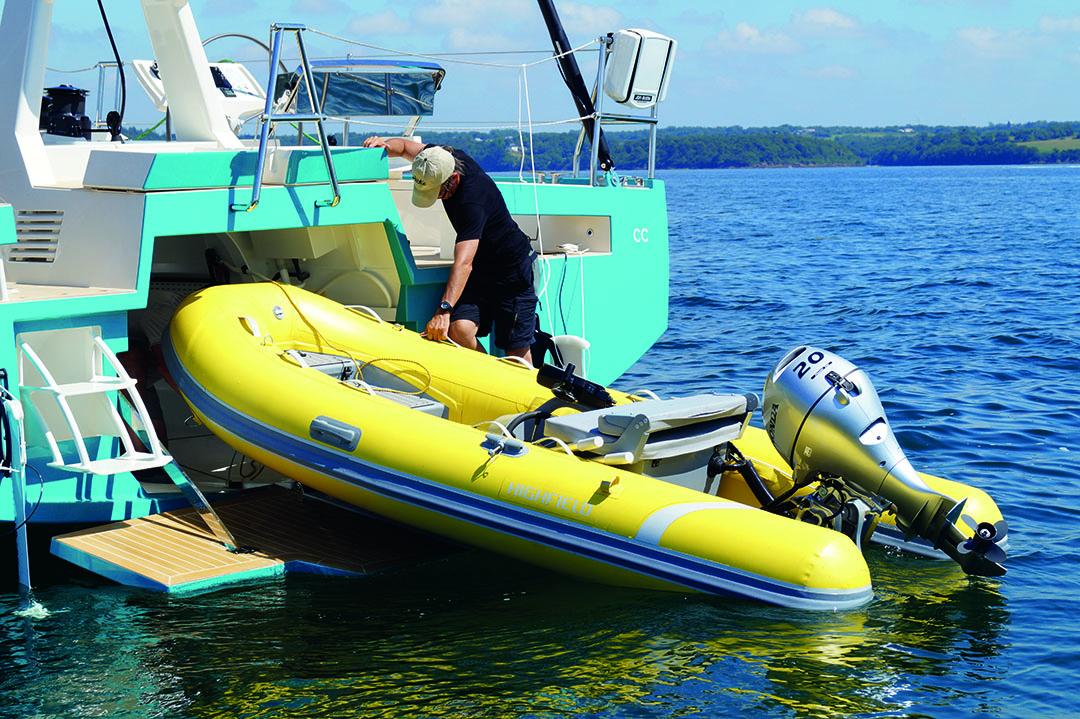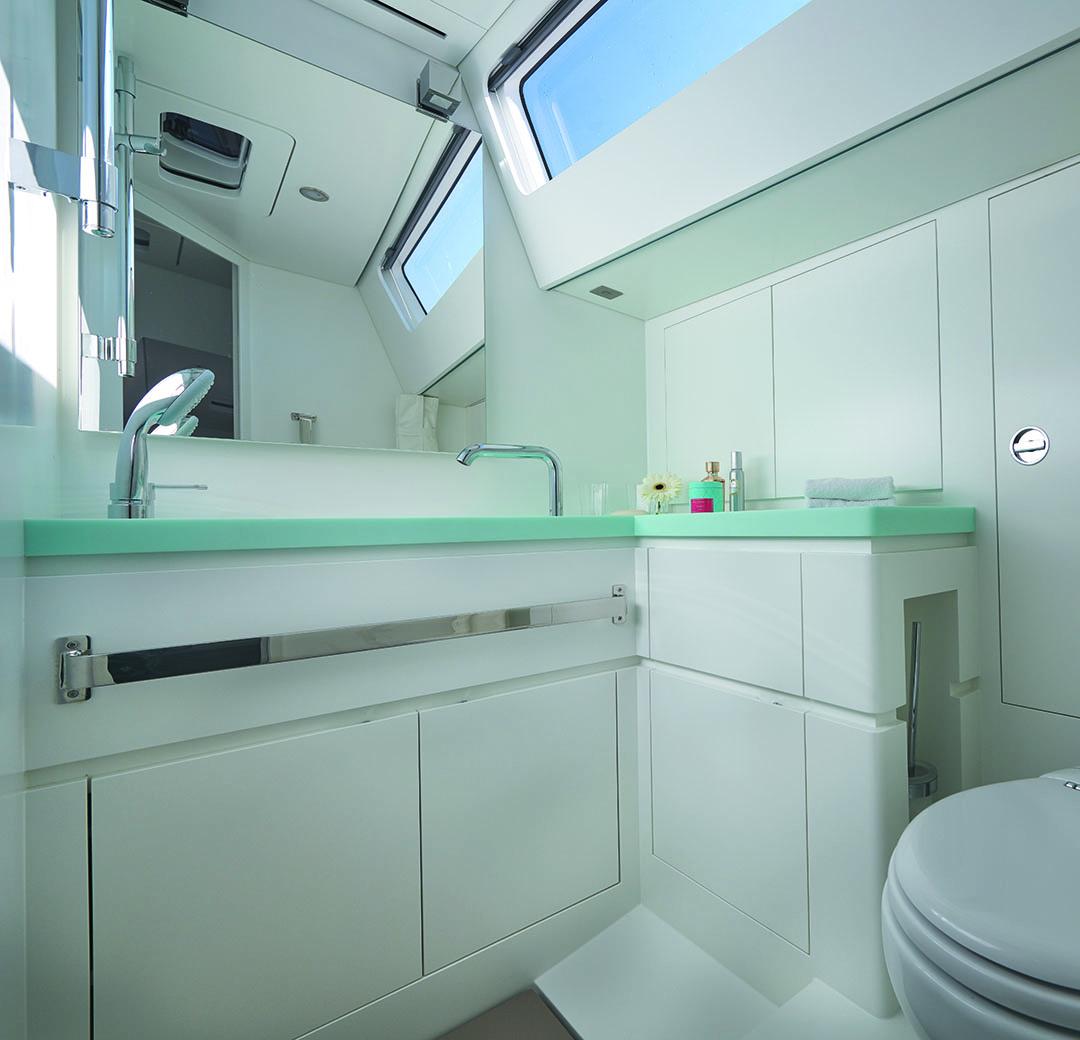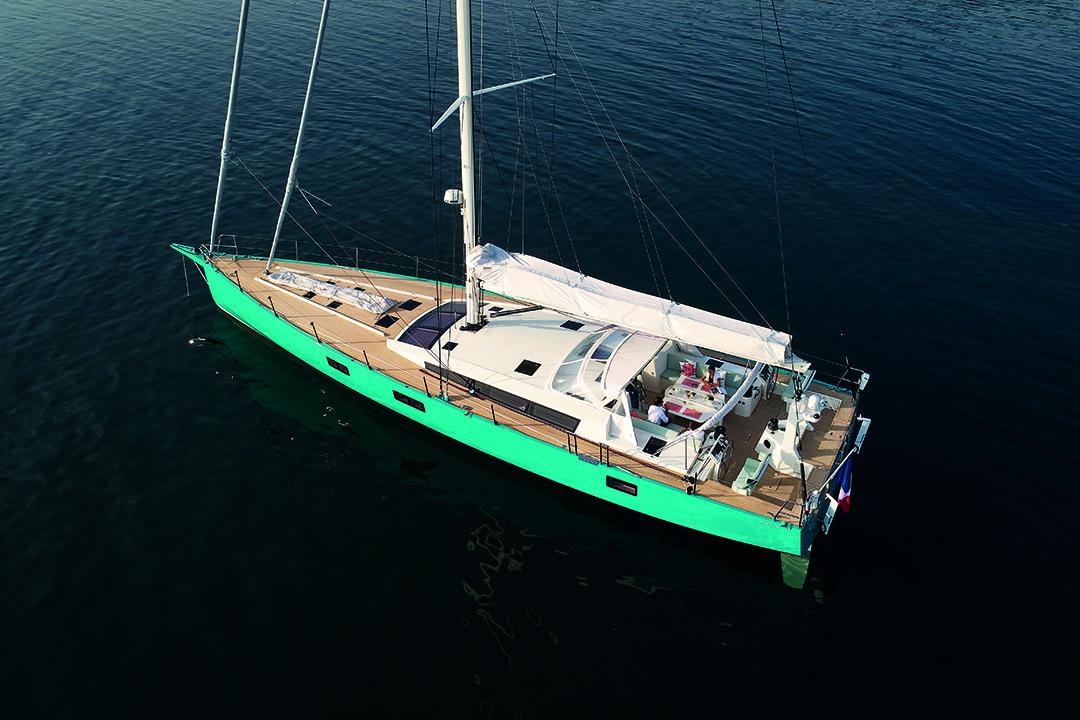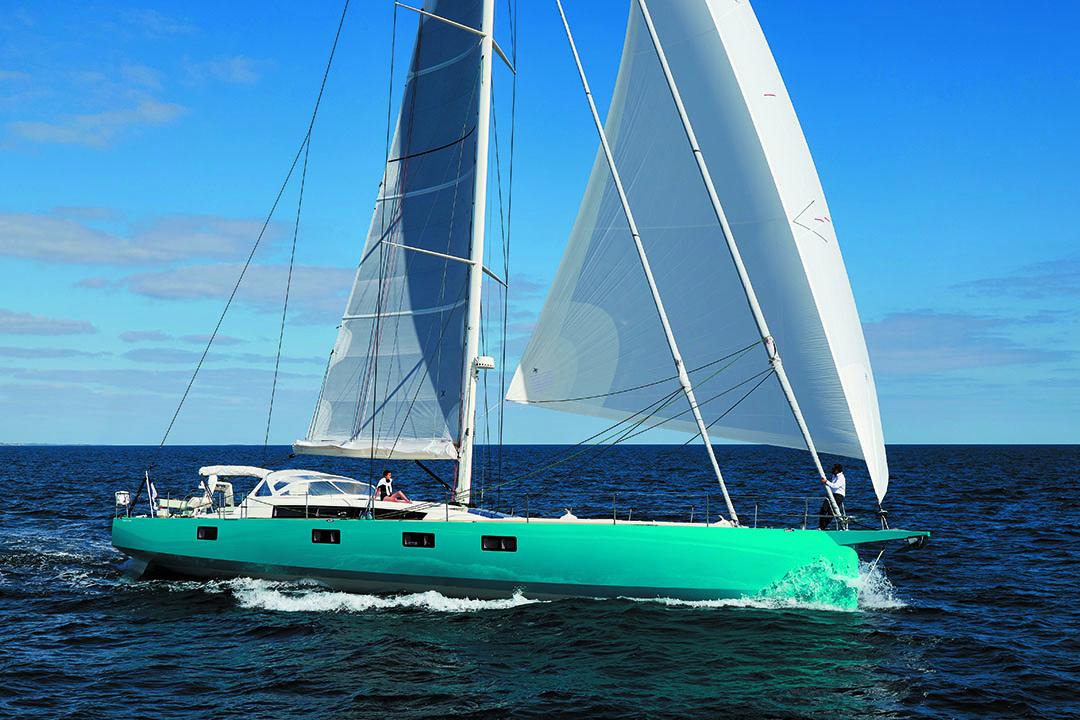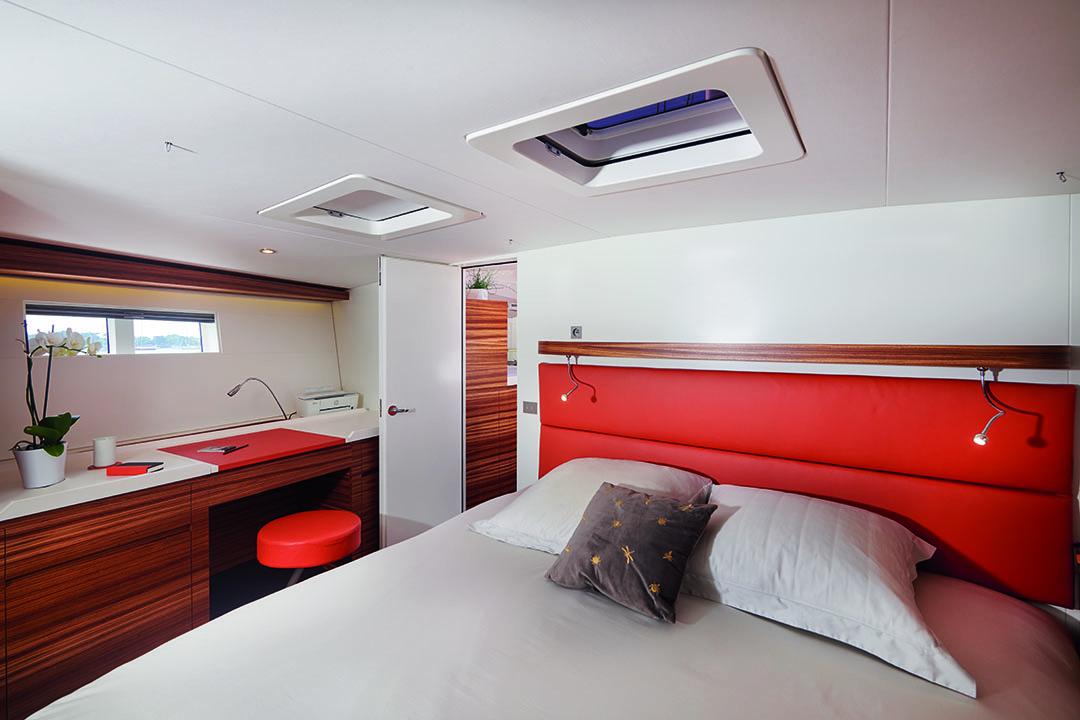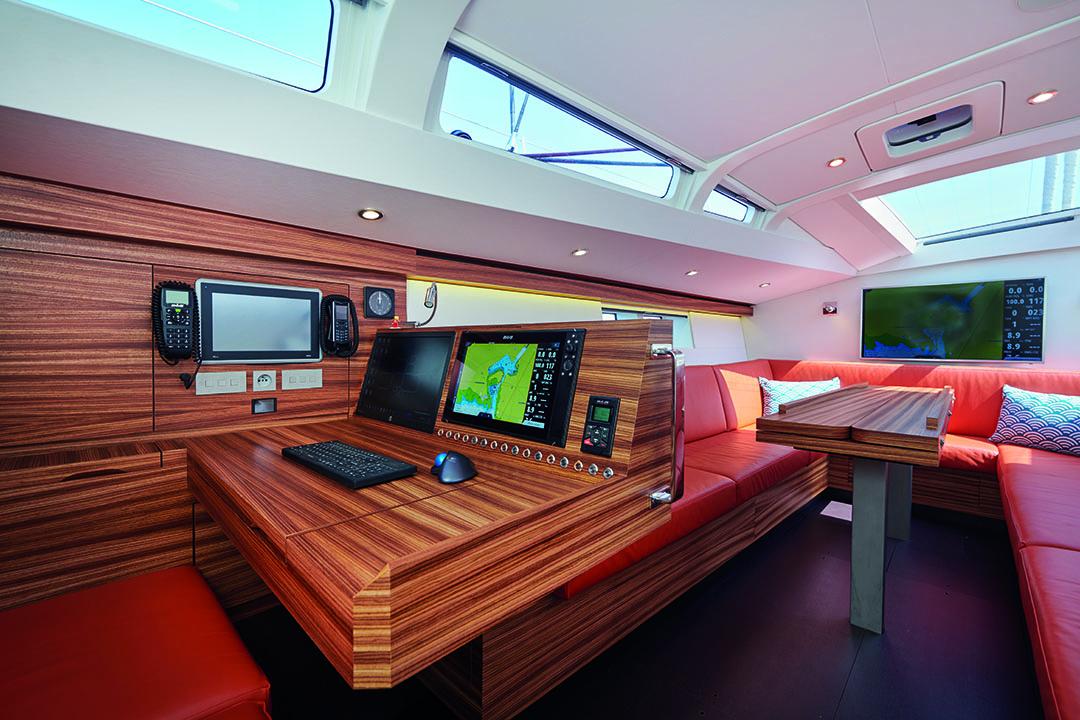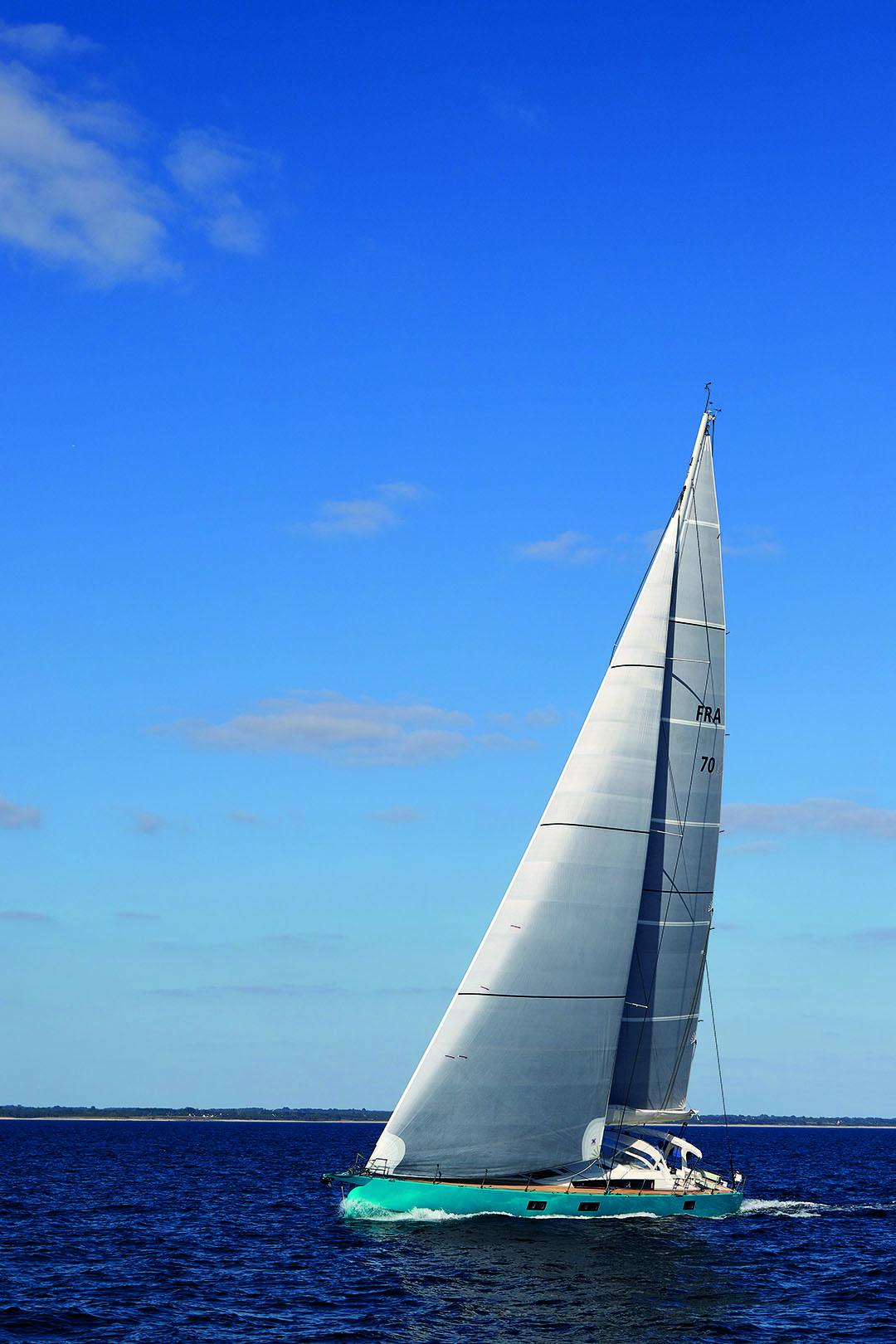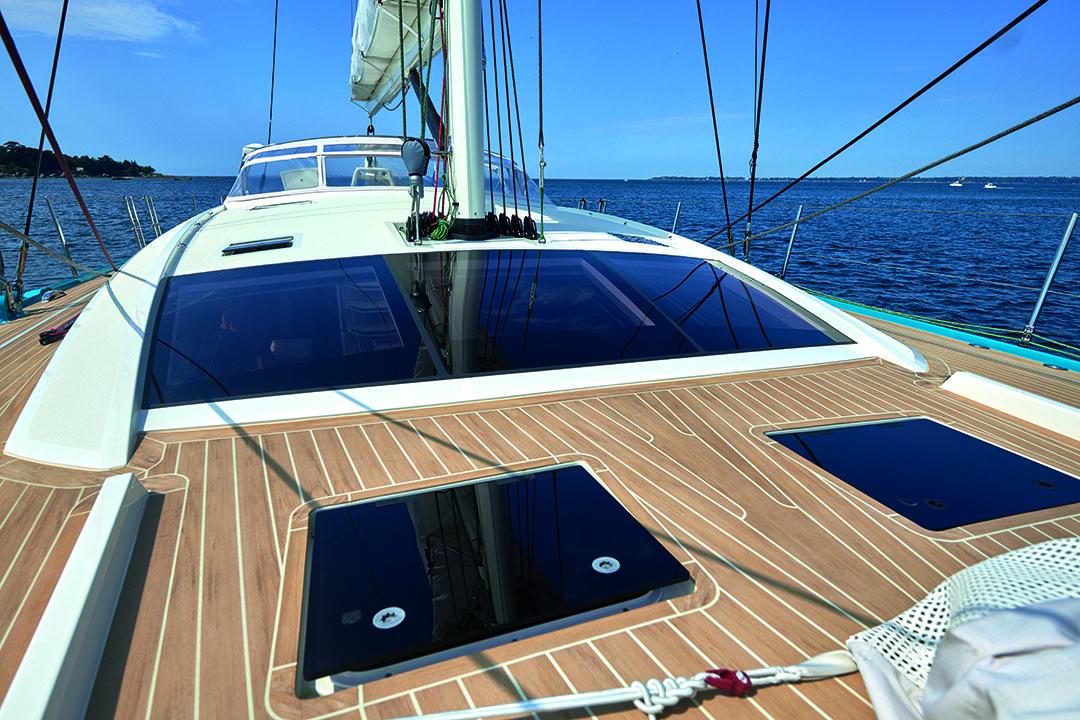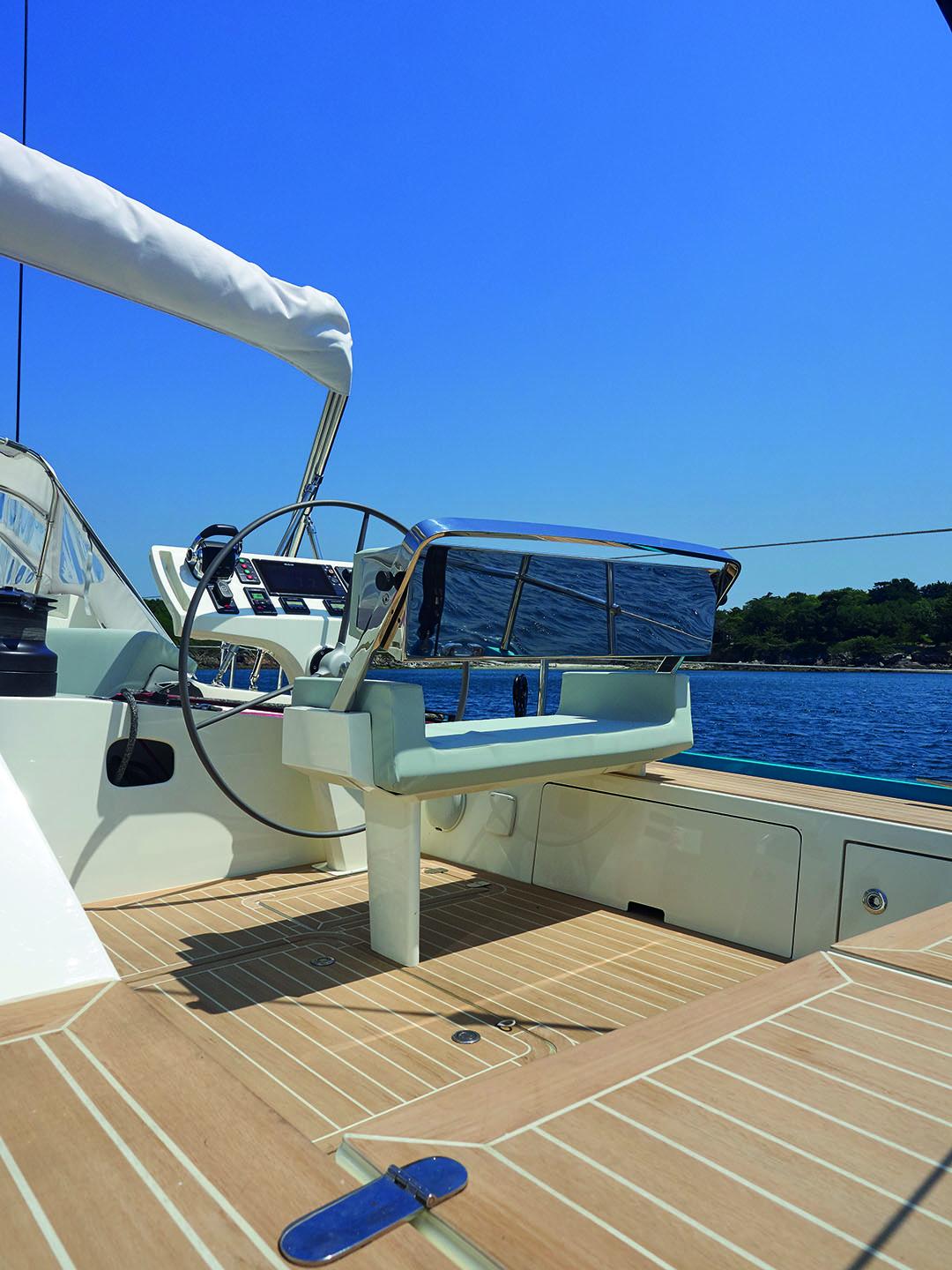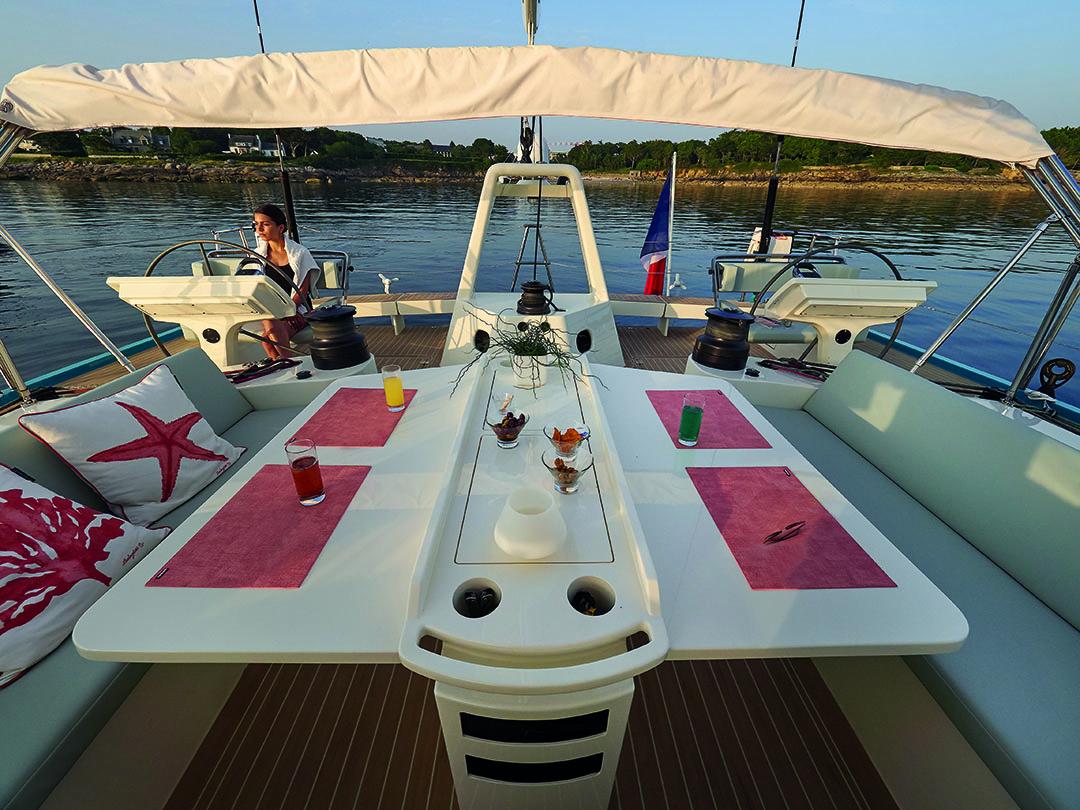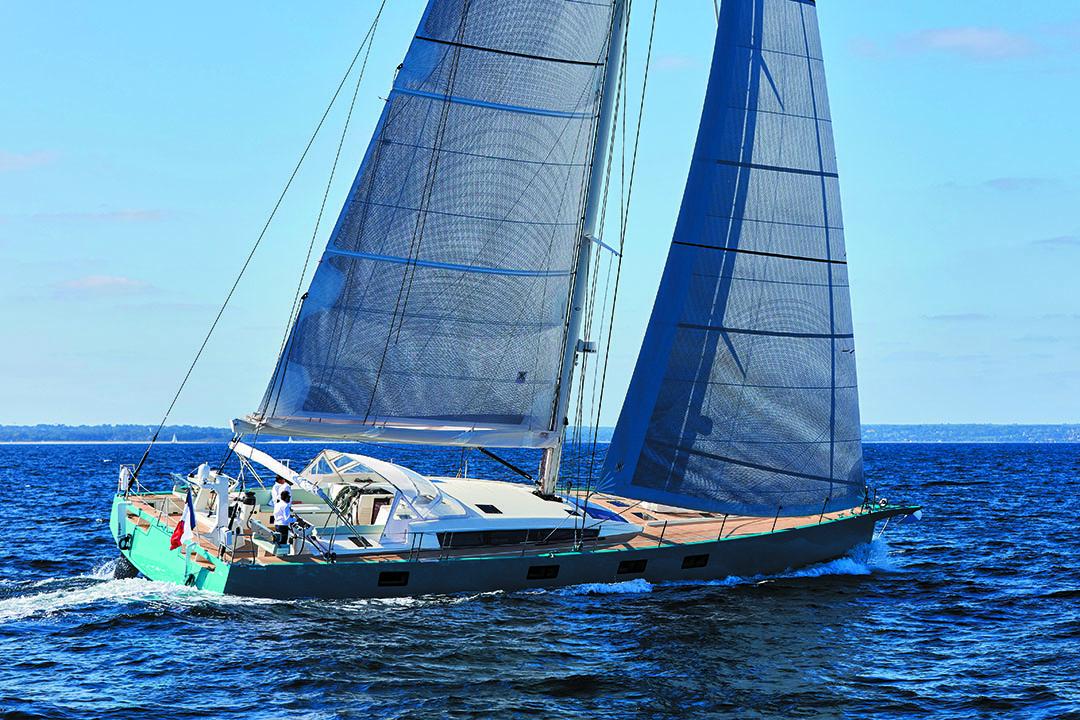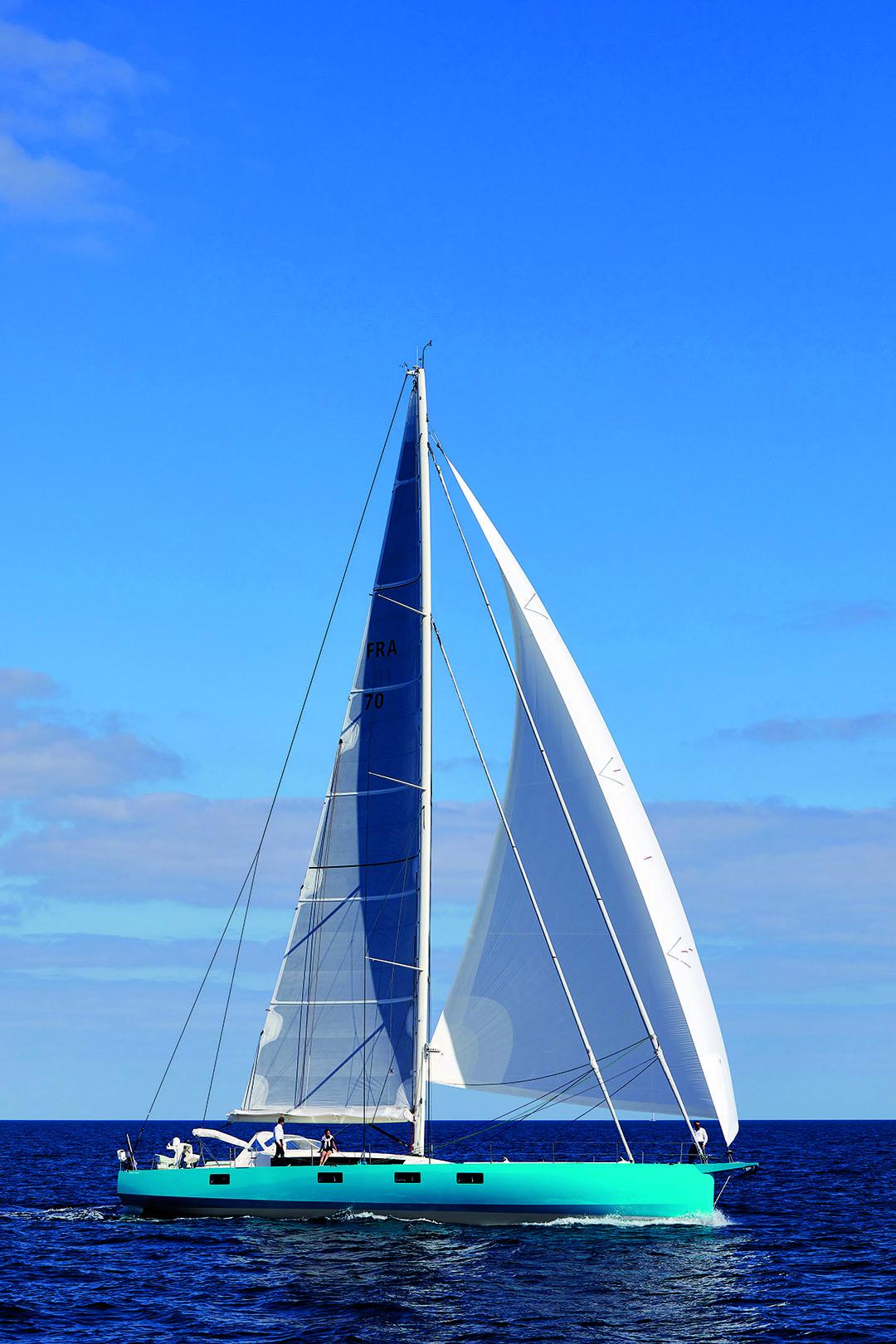Presentation
Yacht Class n°18 (sept-oct-nov 2019)
JFA Yachts
For experienced owners and with the expertise of Finot-Conq, the Breton shipyard JFA has built the FC2 70’ with all the know-how and care that has made its reputation for over 25 years. This fast cruiser offers many ingenuities and details reflecting a real seamanship.
Written by: Christophe Varène Photos : Benoît Stichelbaut et Bernard Galéron / JFA Yachts
A dark spot is moving forward on the water surface, causing the waves crest to foam as they hit its sharp bow. There is puff. We can see it on the digital anemometer’s display, which displays 18 and then 25 knots, soon joined by the speedometer, which rises from 7.5 to 10 knots while we glance at the sail trim. The heel gains a few degrees, the hull is on its bilge and the sailboat cuts a white wake on the deep blue sea. When Aeolus eases off shortly later, the speed is barely affected. When sailing upwind at about 35°, the apparent wind became more significant – 16.5 knots for 11.5 knots of real wind- and she still glides at just over 9 knots. An exhilarating feeling. Off Concarneau, one of the last yachts of the shipyard JFA is undergoing a navigation trial with, on board, her commissioner, the architect and the yard’s representatives. Brittany presents itself in all its finery: sunshine, mild weather and moderate breeze. A perfect setting to discover this FC2 70′, whose brilliant turquoise blue hull cannot go unnoticed in ports where white is predominant and only competes at times with black carbon hulls. Her lines will also leave no one indifferent as they seem to share some characteristics with offshore racing: plumb bow, light superstructures, maxi beam well aft and constant up to the stern, mast positioned aft… which reveal a clear relationship with IMOCA. But let there be no mistake, the FC2 70’is also – above all – a cruising sailboat.
An incontestable sports philosophy
Besides, her name leaves no room for doubt. “FC” stands pour Finot-Conq, a famous architectural firm, which has distinguished itself for the design of racing yachts, including many 60′ Open and the famous Pogo, and “square” for Fast Cruiser. Had she been built with a carbon hull, this 70 foot could have been entitled “FC cube” for Full Carbon (a name considered for the 50, 61 and even 100 feet projects). But let’s go back to our FC2 70′ to continue to appreciate her sporty and mastered philosophy. The deck layout appears uncluttered with all the lines led under the deck to the cockpit and flush hatches, yet our attention is drawn to two longitudinal stringers running from the bow to the mast. The architect, Pascal Conq, who is attending this trial, specified that these are structural reinforcements also used as footrests… on offshore racing boats. Obviously, practicality and performance are never far away. And every single detail embraces this dimension: the Flexiteek deck combines lightness, comfort and robustness, the all-or-nothing genoa provides power when the furling staysail stresses on safety and flexibility. The owner’s long sea experience is also obvious when looking at the boom, a classic model with side brackets to receive the mainsail once dropped, an operation assisted by the switch track. There was no question of using a furling boom, an increasingly common feature on large yachts; there is nothing like a traditional reefing, automatic on the first two, classic for the last one. Finally, the two steering stations each have a control panel. Some of them were doubled (engine, bow and stern thrusters, J1 and J2 furlers), others are simple (mainsail halyard and windlass control). Two bench seats provide comfort in this mainly Spartan place, but it remains to be seen how functional they are when steering or monitoring the autopilot. There is also another control panel for the boat’s hydraulic system to adjust the tension of the forestay and backstay, operate the furling systems, the winches and the lifting keel.
Calm and elegance inside
The FC2 70′ has a solid character to sail fast and far, but she is also charming and enlivens the life on board, be it at sea or at anchor. Circulation on the large cockpit, semi open aft, is organized forward the two steering stations where we find opposite settees, with a table in between, that can be protected by a soft top if necessary. A large companionway offset to starboard offers an easy passage to the interior via wide steps, with a soft inclination and two handrails. The saloon is a total surprise as the sport feeling experienced outside is replaced there by calm and elegance. The interior design, by Pierre Forgia of Finot Conq, is modern and features Zebrano, a very particular wood specie with alternating dark and light strips, combined with white Corian worktops and an orange upholstery. Natural light comes from the many glazed surfaces on the hull and on the sides of the deckhouse, but above all from a beautiful bay window forward the mast support. Note that the long central cabinet organizing the different areas of the saloon is actually concealing the lifting keel and its powerful hydraulic cylinder.
The zebrano-corian-orange trilogy
The galley running the length of the starboard saloon, on a slightly lower level, is perfect to cook while admiring the landscape. Its longitudinal support facilitates its use whatever the tack. Similarly, the drawer fridges open in the direction of travel to prevent any unwanted or impossible openings. All the worktops, as everywhere on the boat, are equipped with significant fiddles to keep things from falling off and offer a solid grip. This detail, crucial for sailors, explains the absence of a handrail on the ceiling. On port side, the navigation station is aptly names as it features a large area for paper charts and numerous screens and control panels to manage all the ship’s systems. Further forward is the saloon with a long central table that can accommodate eight guests. As for the master suite, the debate over a forward or aft location is still raging, but on the FC2 70′, the choice is clear. It was fitted toward the bow and offers a large central double bed in the direction of travel. Once again, the layout is sober and minimalist, with again Zebrano, Corian and orange. It also offers many storage spaces and a desk. In the forward bathroom, a watertight door leads to a potential crew cabin with head. This large volume can also be used as a storage compartment thanks to its direct access from the deck. The large width astern gives the FC2 70′ an interesting layout. Two guest cabins are located along the hull and enjoy nice double berths and private heads, while the central part accommodates the engine compartment, including the technical area with, among other things, a generator and a watermaker. This compact space allows for intervention on all components plus a good weight balance. The garage is accessible via the transom and was designed to enable the launch of a tender of up to 3.40 metres, stored lengthwise.
In the end, the FC2 70′ is seaworthy in her design, clever in her fittings, neat in her construction. She seems to perfectly meet the demanding specifications and undoubtedly the shipyard is prepared to develop a small series based on this fast and easy to live sailboat.
Technical sheet
